Prosthetic technology has advanced rapidly in recent years, with innovations in AI-driven limb control, 3D printing, and neural integration making artificial limbs more functional and accessible. However, the manufacturing, distribution, and supply chain for prosthetic limbs still face significant challenges, including high costs, limited accessibility, counterfeit parts, and a lack of transparency in the supply chain.
Blockchain technology, known for its role in secure transactions and decentralized data storage, has the potential to revolutionize prosthetic manufacturing and distribution. By enhancing security, improving transparency, and streamlining supply chains, blockchain could help ensure that prosthetic limbs are more affordable, authentic, and accessible to those who need them most.
At Robobionics, we believe in leveraging cutting-edge technology to transform the prosthetic industry, making it more efficient and user-friendly. In this article, we explore how blockchain could reshape prosthetic manufacturing and distribution between 2025 and 2030, solving key challenges and bringing artificial limbs to more people worldwide.
1. How Blockchain Ensures Transparency in the Prosthetic Supply Chain
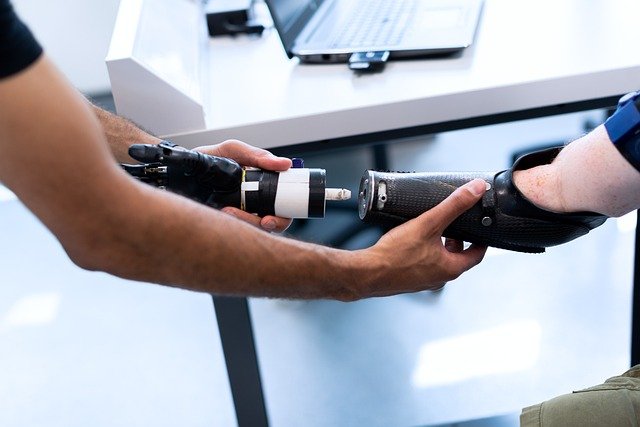
One of the biggest challenges in prosthetic manufacturing is tracking the journey of each component from production to the end user. Traditional supply chains rely on centralized databases, which can be vulnerable to manipulation, fraud, or inefficiencies. Blockchain technology solves this by creating a secure, decentralized ledger that records every transaction in real time, ensuring that every step in the manufacturing and distribution process is fully transparent and tamper-proof.
Each component of a prosthetic limb—whether a 3D-printed joint, an AI sensor, or a motorized actuator—can be tagged with a unique digital identity on the blockchain. This allows manufacturers, suppliers, and customers to track the origin, quality, and movement of each part, preventing counterfeit products from entering the market. With real-time verification, hospitals and prosthetic clinics can ensure that every limb and component they receive meets regulatory standards and is sourced from trusted manufacturers.
By 2030, blockchain-integrated supply chains will make prosthetic distribution more efficient, reliable, and fraud-resistant, ensuring that amputees receive authentic, high-quality prosthetic limbs without delays or unnecessary costs.
2. Reducing Costs and Enhancing Accessibility with Blockchain Smart Contracts
The high cost of prosthetic limbs remains a major barrier for many amputees, especially in developing countries where access to healthcare and assistive technology is limited. Blockchain-based smart contracts could streamline financial transactions, reducing costs and making prosthetics more affordable and accessible.
Smart contracts are self-executing agreements stored on the blockchain, which automatically trigger payments, shipments, and service contracts when predefined conditions are met. Instead of relying on intermediaries like banks, insurance companies, and distributors, smart contracts can automate transactions directly between patients, manufacturers, and suppliers, eliminating unnecessary fees and reducing delays.
For example, a government healthcare program could use blockchain-based smart contracts to automatically subsidize prosthetic purchases for low-income patients, ensuring that funds go directly to verified prosthetic providers without risk of corruption or misallocation. Similarly, insurance companies could process claims instantly, releasing payments as soon as a prosthetic limb is verified as delivered and fitted correctly.
By 2030, blockchain-driven smart contracts will eliminate inefficiencies, speed up reimbursements, and make prosthetic limbs more financially accessible to those in need, improving global access to assistive technology.
3. Preventing Counterfeit Prosthetic Components with Blockchain Authentication
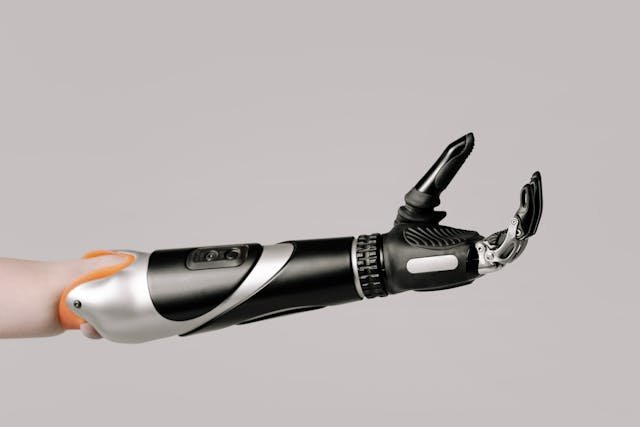
Counterfeit prosthetic components are a serious risk in the industry, as low-quality materials, unverified parts, and fake certifications can compromise user safety and device performance. Blockchain provides a secure authentication system, ensuring that every prosthetic component is genuine and meets industry standards.
Manufacturers can assign a blockchain-verified digital certificate to each component, recording details such as material composition, production date, and compliance certifications. When a prosthetic clinic or hospital receives a component, they can instantly verify its authenticity using blockchain records, eliminating the risk of using unapproved or unsafe materials.
For users, blockchain authentication provides peace of mind, ensuring that their prosthetic limb is made from high-quality materials that meet safety regulations. This level of transparency will help eliminate substandard prosthetics from the market, protecting both patients and medical professionals from faulty or hazardous devices.
By 2030, blockchain-powered authentication systems will make counterfeit prosthetic components virtually impossible, ensuring that every artificial limb is safe, reliable, and fully compliant with industry standards.
4. Decentralized 3D Printing and Open-Source Prosthetic Innovation
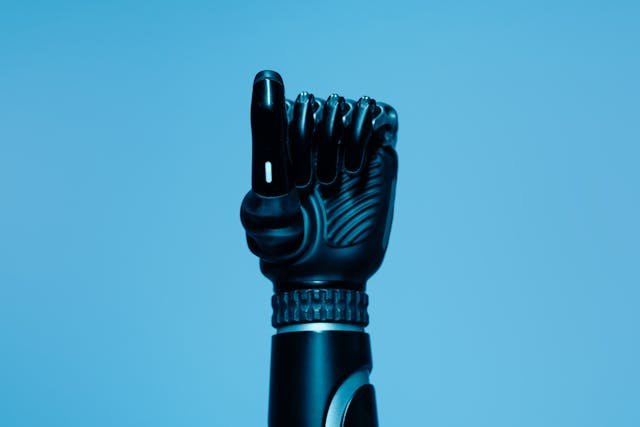
The rise of 3D printing has already made prosthetic limbs more customizable and affordable, but blockchain can take this even further by creating a secure, decentralized network for open-source prosthetic designs.
Currently, many prosthetic designs are owned by private companies, making it difficult for people in developing regions to access affordable, high-quality artificial limbs. Blockchain can serve as a secure digital marketplace where prosthetic developers share verified 3D-printable designs, ensuring that communities and hospitals worldwide can manufacture custom prosthetics on demand.
With blockchain, designers can upload their prosthetic blueprints with digital rights protection, ensuring that they receive fair compensation while keeping designs open to the public. Hospitals, clinics, and NGOs can access these designs through a decentralized blockchain database, printing prosthetic limbs locally rather than relying on expensive international shipments.
By 2030, blockchain-powered open-source prosthetic networks will allow for instant, low-cost production, ensuring that even remote or underserved communities have access to advanced prosthetic technology.
5. Blockchain for Secure Medical Records and Prosthetic Fit Tracking
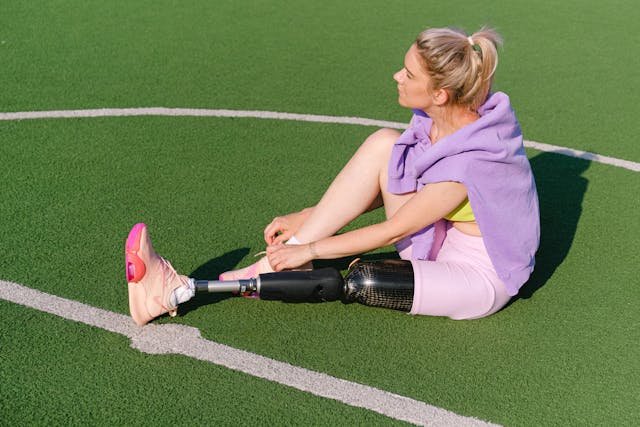
One of the biggest challenges in prosthetic care is tracking patient history, prosthetic adjustments, and long-term fit issues. Many prosthetic users need frequent modifications, and medical records are often fragmented across different hospitals, clinics, and insurance providers. Blockchain offers a secure, tamper-proof system for storing and accessing prosthetic user data, ensuring that healthcare providers always have up-to-date, accurate records.
With blockchain-based medical records, prosthetic technicians can instantly access a patient’s limb history, previous adjustments, and real-time performance tracking, allowing for faster and more precise modifications. Users can also store their own prosthetic data on a private blockchain wallet, ensuring that they have full control over their medical history.
By 2030, blockchain-powered medical records will make prosthetic care more efficient, reducing paperwork, eliminating record duplication, and ensuring that every user gets the best possible prosthetic fit with minimal delays.
6. How Blockchain Can Improve Prosthetic Insurance and Reimbursement Systems
One of the biggest challenges in prosthetic care is the complicated and time-consuming insurance and reimbursement process. Many prosthetic users face delays in claim approvals, unclear payment structures, and issues with fraud, making it difficult to receive timely and affordable prosthetic solutions. Blockchain technology can eliminate inefficiencies in the insurance process by creating a transparent, automated, and fraud-resistant system for claims and reimbursements.
With blockchain, every step of the insurance process—from prosthetic prescription and approval to billing and reimbursement—can be recorded on a secure, decentralized ledger. This means that insurance companies can instantly verify the authenticity of prosthetic claims, track medical history, and process payments faster without unnecessary paperwork. Smart contracts can also be used to automate payments, ensuring that funds are released as soon as a prosthetic limb is verified as delivered and fitted correctly.
By 2030, blockchain-driven insurance platforms will significantly reduce delays in prosthetic reimbursement, cut administrative costs, and provide users with a smoother, faster, and more transparent claims process. This will help amputees receive their prosthetic limbs without financial uncertainty or long waiting periods.
7. Blockchain-Powered Supply Chain Traceability for Sustainable Prosthetic Manufacturing
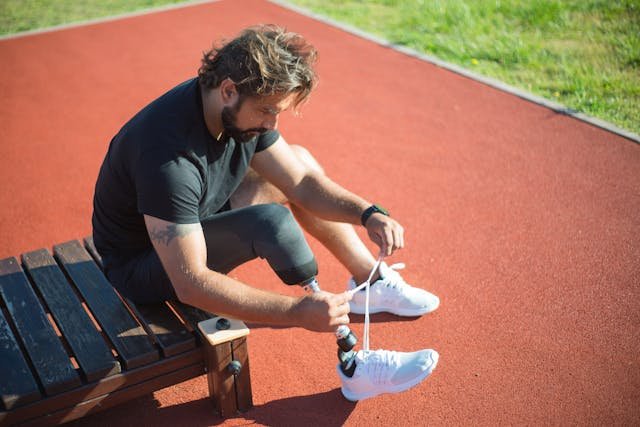
Sustainability is becoming a major focus in prosthetic manufacturing, as many traditional materials used in artificial limbs—such as plastics and metals—have a high environmental impact. Blockchain can play a crucial role in tracking and verifying sustainable materials in prosthetic production, ensuring that eco-friendly options become the standard.
Through blockchain-enabled supply chain traceability, manufacturers can log every material used in a prosthetic limb, allowing consumers, clinics, and regulators to verify its origin, quality, and environmental impact. This system ensures that only ethically sourced, biodegradable, or recyclable materials are used in prosthetic manufacturing. Additionally, blockchain can track energy consumption and carbon footprints in prosthetic production facilities, promoting green manufacturing practices.
By 2030, blockchain will enable greater transparency in sustainable prosthetic manufacturing, ensuring that every prosthetic limb is produced with ethical, eco-friendly materials and methods. This shift will help reduce medical waste, lower production costs, and promote a more responsible approach to assistive technology.
8. How Blockchain Could Enable a Global Network for Prosthetic Donations
Millions of amputees around the world lack access to proper prosthetic care due to financial constraints, lack of distribution networks, and limited healthcare infrastructure. Blockchain could create a decentralized global network for prosthetic donations, ensuring that artificial limbs are efficiently distributed to those in need.
A blockchain-powered donation platform could allow prosthetic manufacturers, donors, and NGOs to track and verify donations in real time, ensuring that every prosthetic limb reaches the right recipient without fraud or misallocation. Users could also verify their need for a prosthetic limb by registering on the blockchain, allowing donors to directly sponsor prosthetic fittings for individuals in underserved regions.
By 2030, blockchain-driven donation networks will make it easier for amputees in low-income areas to receive high-quality prosthetic limbs, eliminating middlemen, increasing transparency, and ensuring that every donation is used effectively. This could revolutionize global prosthetic accessibility, allowing millions of people to regain mobility and independence.
9. Enhancing User Control and Data Privacy in Prosthetic Care with Blockchain
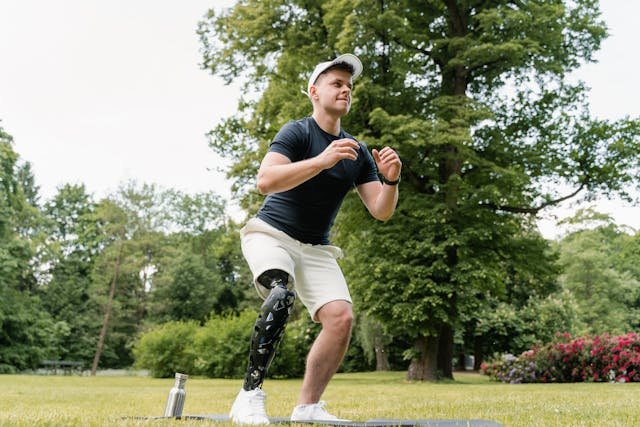
Many prosthetic users today lack control over their own medical and prosthetic records, as this data is often stored by clinics, insurance providers, or manufacturers. Blockchain can change this by giving users full ownership of their prosthetic data, movement history, and medical records through a secure, decentralized platform.
With blockchain-powered self-sovereign identity (SSI) systems, prosthetic users can securely store their medical history, limb fitting details, and performance data in a personal digital wallet. This allows them to instantly share their records with new healthcare providers or manufacturers without delays or risks of data loss. Users can also choose what information to share, improving privacy while ensuring faster, more personalized prosthetic care.
By 2030, blockchain-based user-controlled medical records will make prosthetic care more efficient, secure, and patient-centric, ensuring that prosthetic users always have access to their own health data and control over their treatment options.
10. The Role of Blockchain in Facilitating Global Collaboration in Prosthetic Research
Innovation in prosthetic technology depends on collaboration between researchers, engineers, and medical experts worldwide. However, many of the latest advancements in prosthetic science remain locked behind patents, corporate research silos, and fragmented data-sharing systems, slowing down progress. Blockchain can revolutionize the way prosthetic research is shared, verified, and implemented by creating a decentralized, transparent research network.
By using blockchain-based smart contracts and encrypted data-sharing platforms, prosthetic researchers and engineers can publish new discoveries, share clinical trial results, and verify experimental prosthetic designs in real time. This system ensures that research data is tamper-proof, widely accessible, and traceable to its original source, eliminating issues of misinformation and duplication.
By 2030, blockchain-powered research networks will accelerate prosthetic innovation, enabling faster advancements in AI-driven limb control, neural integration, and bioengineered materials. This will lead to more groundbreaking developments in the prosthetic industry, making artificial limbs smarter, more responsive, and closer to natural limb function than ever before.
11. How Blockchain Will Improve After-Sales Service and Maintenance for Prosthetic Users
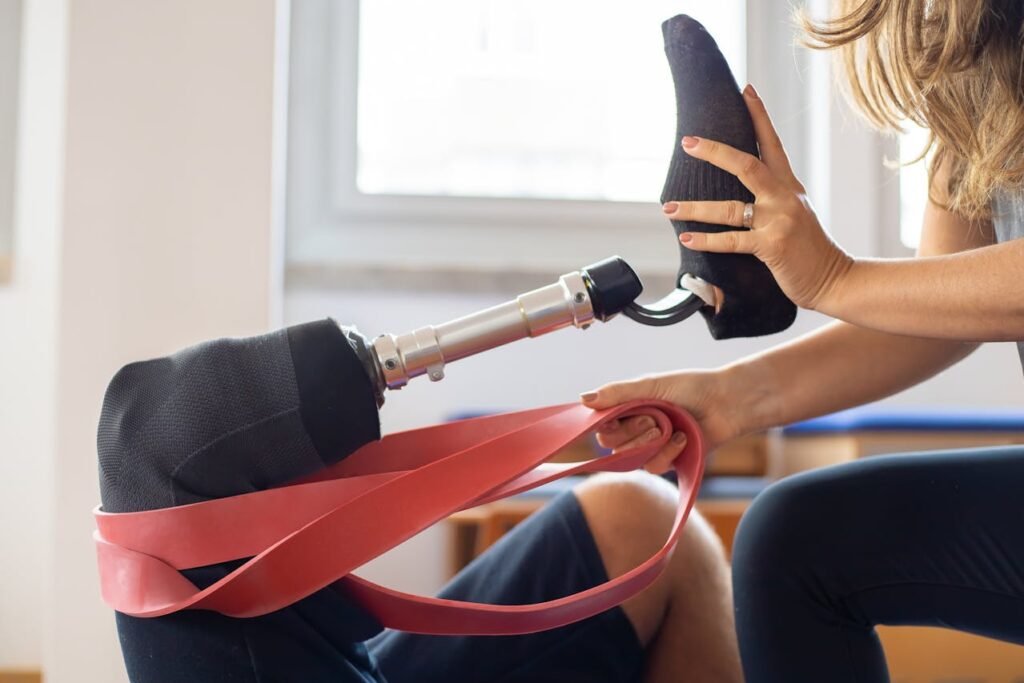
Prosthetic limbs require regular maintenance, software updates, and repairs to ensure long-term functionality. However, many users face difficulties in tracking their prosthetic service history, scheduling repairs, and verifying part authenticity. Blockchain can solve these problems by creating a secure, tamper-proof record of all prosthetic maintenance and service updates.
With a blockchain-based service ledger, prosthetic users, manufacturers, and clinics can track every repair, replacement, and adjustment made to a limb, ensuring that maintenance history is fully transparent and easily accessible. This system can also verify the authenticity of replacement parts, preventing unauthorized or low-quality components from being used in prosthetic repairs.
By 2030, blockchain-powered prosthetic maintenance systems will ensure that every artificial limb remains in top condition, reducing downtime, repair costs, and the risk of prosthetic failure. This will greatly improve user satisfaction and long-term device performance, making prosthetic care more reliable and efficient.
Final Thoughts: How Blockchain Will Revolutionize Prosthetic Manufacturing and Distribution
Blockchain technology is set to transform the prosthetic industry, solving some of the biggest challenges related to cost, accessibility, counterfeit prevention, and supply chain inefficiencies. By providing a transparent, decentralized system for prosthetic verification, authentication, and financial transactions, blockchain will ensure that high-quality prosthetic limbs reach those who need them most—without delays, fraud, or excessive costs.
Between 2025 and 2030, blockchain will streamline production, prevent counterfeit components, enable real-time medical tracking, and support decentralized 3D printing networks. This will not only improve access to prosthetic technology but also empower amputees to receive better, more personalized care with greater transparency and security.
At Robobionics, we are committed to exploring blockchain-driven solutions that enhance prosthetic manufacturing and distribution, ensuring that our users experience affordable, secure, and cutting-edge prosthetic technology. If you are interested in the future of blockchain-powered prosthetic solutions, book a free demo with Robobionics today and discover how technology is shaping the next generation of artificial limbs.



